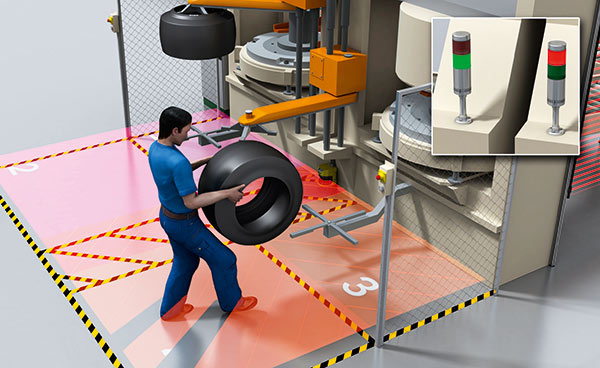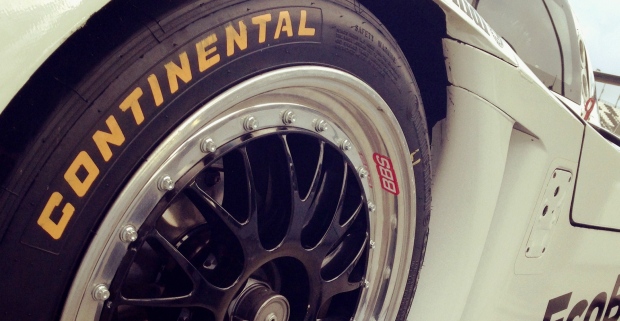Continental Working with Experts from SICK to Improve Safety
A flexible system for hazardous area protection on tire curing presses ensures optimum safety, efficiency, and ergonomics for the tire manufacturer Continental. As part of an international project, Continental is working with experts from SICK to improve safety on its tire curing presses, which are in use at 16 locations around the world.
The starting point for the project at Continental was a comprehensive risk assessment carried out on a range of typical tire curing presses. Right from the start, Continental worked with an international team to increase acceptance of the solution throughout the entire company. The findings were then used to create a safety concept. This took into account all the mechanical risks at the front of the press as well as those at the sides, rear, and underneath.
Alongside high safety requirements, efficiency and the approval of the machine operators are crucial for Continental. A high level of flexibility when operating neighboring machines and best use of available space were key factors for this application. The integration of all of a machine’s safety components with short shutdown times and quick commissioning were also important.
SICK set to work on these requirements and developed what was then a unique solution for Continental.

Extremely flexible when operating neighboring machines. The S3000 safety laser scanner and the Flexi Soft safety controller simultaneously monitor up to four protective fields.
Laser scanners monitor four protective fields simultaneously
At the front of the press, where the workers operate the press and the most important hazardous area protection is required, the S3000 safety laser scanner and the Flexi Soft safety controller from SICK monitor up to four protective fields at the same time.
So, just one safety laser scanner covers up to four protective fields simultaneously, i.e., without protective field switchover and thus without additional response times and without unnecessarily shutting down neighboring machines. This means that four dangerous movements, either from a machine or from neighboring system parts, can be covered. This ensures maximum flexibility when operating adjacent machines and production processes – with minimum hardware requirements.
This is possible thanks to the flexibility of the S3000 combined with the experience of the developers at SICK.
SICK supports Continental during global rollout
“The safety of the tire curing presses is very important to us,” emphasizes Timo Kuss, Global Project Manager and Plant Engineering Manager at Continental in Aachen, Germany. “Which is why we need a partner that we can rely on to deliver the necessary services and machine acceptance processes throughout the world.”
SICK is currently supporting the simultaneous rollout of the safety concept step by step in up to 16 countries worldwide. This involves on-site kick-off meetings and supplementary risk assessments at the respective production sites to identify specific regional safety risks, along with support during the implementation of pilot projects, supply of essential safety components, safety system commissioning, and finally the safety acceptance according to the specification. This is taken care of by certified safety specialists from SICK who are on hand on site around the world.
And that’s not all: implementing and reliably operating the safety concept means that comprehensive documentation is required. SICK also has the drive and skills to assist in this regard. The SICK team are drawing up operating instructions for the safety aspect of the tire curing presses and creating maintenance instructions – in the relevant languages. Safety and efficiency throughout the world – that’s the shared vision of Continental and SICK.







